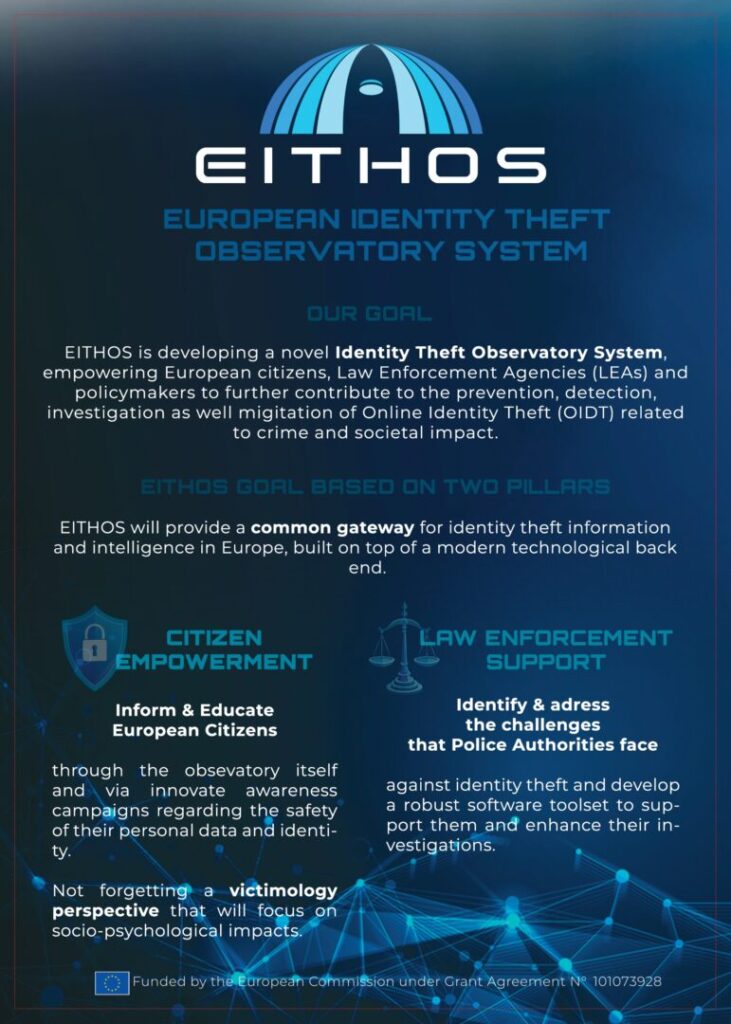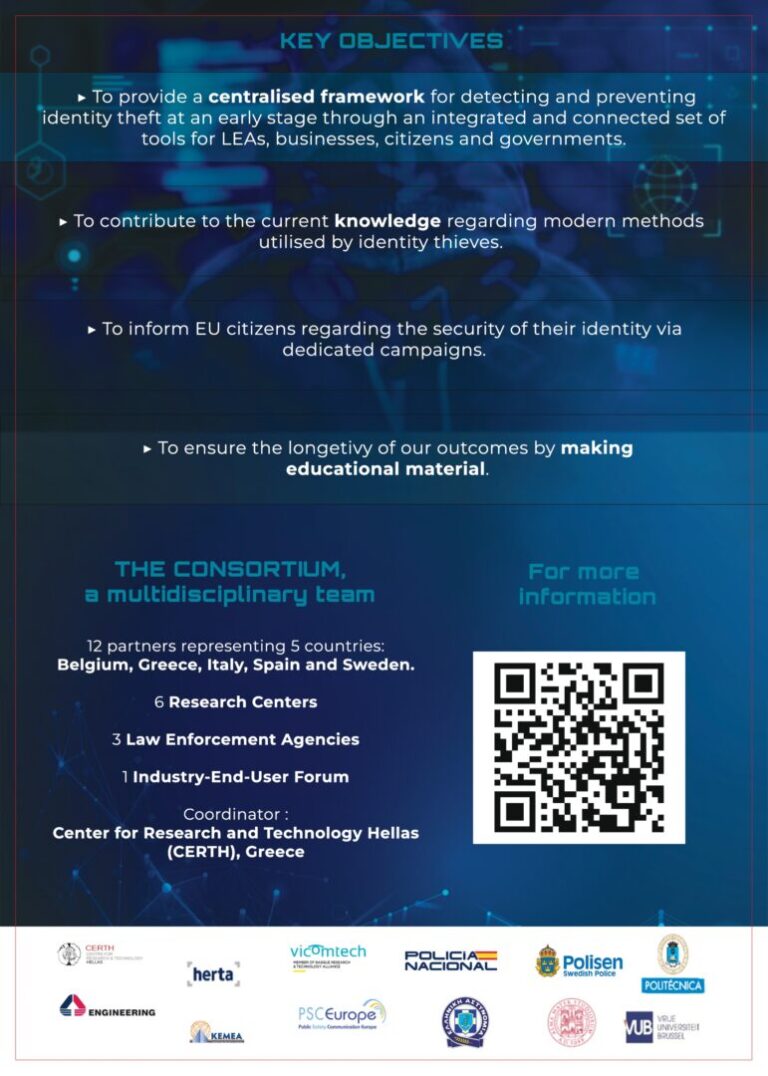

What is EITHOS, technically speaking?
Over the recent years, Online Identity Theft (OIDT) related frauds have grown at an extremely fast pace, and the increasing assimilation of digital technology in people’s lives raises both the opportunities for fraud and the stakes of failing to prevent it. OIDT criminals employ a very wide set of frauds, ranging from the remarkably simple to the complex and sophisticated. OIDT investigations are hampered by many obstacles, with one of them being the lack of modern technological means that address the challenges Law Enforcement Agencies (LEAs) face.
Current technological advancements, especially in the field of Artificial Intelligence (AI)-based image generation and manipulation, have provided OIDT criminals with sophisticated tools and hinder police investigations which must keep up with current technological trends.
At the end of the project, EITHOS has the aim to produce a forensics AI-based technological toolset with the purpose of advancing the current technical means that LEAs utilize, by first understanding their needs and the challenges they face. The delivered tools address deepfake detection (audio/image/video) and fake social media accounts managed by botnets, and will serve as an additional help to LEAs to assess a probability of risk associated to any online piece information under suspect.
The primary objective of the video/image deepfake detection tool is to validate the authenticity of individuals depicted in a given video or image content. Using advanced machine learning techniques, the tool aims to ascertain whether the portrayed persons are genuine or if their identity has been manipulated through deepfake technology, on a verification approach.
To achieve this goal, the tool uses pristine data of the identities in question. After learning an identity, it will be able to distinguish between the true person and a deepfake version of them. EITHOS introduces an innovative method for detecting deepfakes that diverges from the conventional approaches. Rather than solely relying on established techniques, we prioritize understanding individual identities, going beyond traditional datasets.
The audio deepfake detection tool employs state-of-the-art AI-based techniques to analyse voice signals that help identify audios generated by synthetic means. Then, the detection tool will provide to the LEAs the probability of an audio to be genuine or fake, as well as a final decision according to the input information provided by the user. Aside, if technological advances allow for deeper analysis, additional feedback about the decision of the system will be given as well.
The LEA partners have demanded that the tool should have the highest accuracy regardless of the technological approach. In the state-of-the-art concerning audio deepfake recognition, unlike the image/video tool, the detection approach is the main research line followed at the moment and it shows the highest accuracy results in different benchmarks of the community.
The Fake account botnet detection tool aims to help LEAs to identify the particular characteristics and patterns of behavior denoting that a social media profile is managed by a botnet, based on the same perspective these profiles would be seen by a third party. With this information, detection of suspicious profiles to keep under surveillance should be an easier task for the agencies.
The novelty of this toolset resides on its horizontal focus. Whilst most of the works described in literature perform a deep analysis in only one aspect or behavioral requiring constant data retrieval and strong interaction with the platform APIs, the botnet detection toolset developed in EITHOS covers the analysis of different cues and pondered together requiring a minimal extraction of data, adapting its functioning and parameters to each social media platform of the considered.
Additionally, EITHOS also aims to start contributing to the body of knowledge of the modus operandi of OIDT today, by showing how the developed detection tools counter the effect of these practices. Because of this, the technical solutions offered by EITHOS are integrated in the observatory, where LEAs will be able to access them and save the information and conclusions they get from their usage for future cases.
Furthermore, the observatory will act as a safe place where victims may report their cases to be thoroughly helped.
